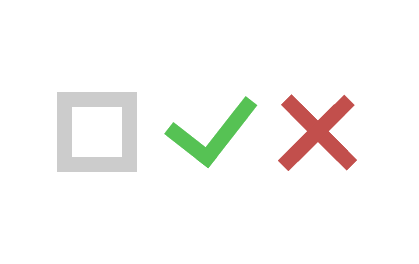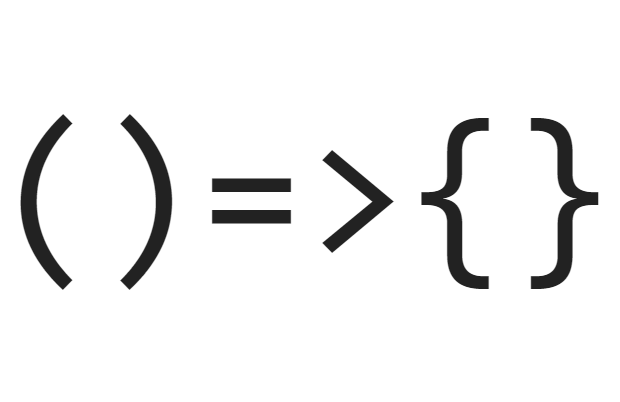Creating AngularJS Directive 'Three-state-checkbox'
16 Jun 2016

Pre-story
Yesterday at work, I’ve received a task, which I should had done today (and I actually did).
Simple task to filter table by logical value in one column.
So I had 3 values to filter by: null, true and false (not filtered, published, unpublished).
I’ve thought what would be the best visual solution for that…
I knew, that I don’t want to create three-option select, like that:
(what is actually the fastest solution of that issue) .
But I’ve decided to make three-state checkbox. I wanted it to be clean and semantic solution, so I’ve also decided to create open-source package with AngularJS directory of three-state-checkbox.
Preparing your project for public usage
 Init your project with npm and if you are registered at npmjs you can publish it to node package manager.
Init your project with npm and if you are registered at npmjs you can publish it to node package manager.
Read more how to publish your package.
We use both bower and npm at our project. But our gulp is configured to automatically insert bower dependencies to index.html while id building.
Also if you are publishing your first package you don’t have to register at bower, and documentation is more understandable:
Creating package with bower
* What is the difference between bower and npm?
Creating AngularJS Directive
If you want to export your directive for others or to use it in a multiple projects, you should create separate Angular Module with that directive.
angular.module("threeStateCheckbox", [])
.directive("threeStateCheckbox", [ function(){
return {
restrict: "A",
transclude: true,
require: 'ngModel',
scope: {
'ngChange': "&ngChange",
'ngModel': "=ngModel"
},
link: function(scope, element, attrs, ngModel){
}
};
}]);Ok now we have our angular module and directive initialized.
So to use it in another project, you need to add this JavaScript file to index.html and add "threeStateCheckbox" module to dependencies of your app module.
In my directive ngModel is required so usage of it should look like this:
app.js :
angular.module("myApp", ["threeStateCheckbox"])
.controller("myCtrl",[function(){
this.checkboxModel = null;
}]);index.html :
<head>
<!-- title, etc ... -->
<link rel="text/css" href="three-state-checkbox.css"/>
</head>
<body ng-app="myApp" ng-controller="myCtrl as mc">
<!-- html code ... -->
<span three-state-checkbox ng-model="mc.checkboxModel"></span>
<!-- html code ... -->
<script type="text/javascript src="angular.min.js"></script>
<script type="text/javascript src="three-state-checkbox.js"></script>
<script type="text/javascript src="app.js"></script>
</body>Ok. But directive is showing nothing now.
If you are creating simple element directive (like checkbox, input, etc ), you should better not create template for your directive, but use element, by which your directive was initialized in html file.
Modify your element and then do $compile(element)(scope);.
link: function(scope, element, attrs, ngModel){
scope.click = function(){};
element.attr("class", "tri-sta-che");
element.attr("ng-click", "click()");
element.removeAttr("three-state-checkbox");
$compile(element)(scope);
}So as you can see, I’ve added ng-click and class attributes and removed three-state-checkbox, because my directive is configured with restrict: "A", which means it can be linked only by attribute.
Ok now we need to change ngModel, when someone will click on the “checkbox”.
4-th attribute of link function is Collection of required directives, or is a single directive, if only one directive is required.
As ngModel is the only directive required by three-state-checkbox I can reach the ngModel object from link function attributes.
We will use 2 methods and 1 parameter of ngModel object:
$setViewValue()- to set value tongModel$render()- to renderngModeland trigger event forng-change$modelValue- current value ofngModel
link: function(scope, element, attrs, ngModel){
var states = [true, false, null];
scope.click = function(){
var st;
states.map(function(val, i){
if(scope.ngModel === val){
st = states[(i+1)%3];
}
});
ngModel.$setViewValue(st);
ngModel.$render();
};
element.attr("class", "tri-sta-che");
element.attr("ng-click", "click()");
element.removeAttr("three-state-checkbox");
$compile(element)(scope);
}Ok. Now three-state-checkbox directive is working properly, changing ngModel and triggering ngChange event.
I’ve also added options parameter to directive, and ng-class attribute to element, to change class when state is changed.
So my stable version v 1.1.0 looks like this:
'use strict';
angular.module("threeStateCheckbox", [])
.directive("threeStateCheckbox", ['$compile', function($compile){
var dirObj = {
restrict: "A",
transclude: true,
require: 'ngModel',
scope: {
'options': "@options"
},
template:'<span class="tsc-b tsc-b-t"></span>'+
'<span class="tsc-b tsc-b-l"></span>'+
'<span class="tsc-b tsc-b-r"></span>'+
'<span class="tsc-b tsc-b-b"></span>',
link: function(scope, element, attrs, ngModel){
config.set(scope.options);
var states = [true, false, null];
var classNames = ["checked", "unchecked", "clear"];
scope.click = function(){
var st;
states.map(function(val, i){
if(ngModel.$modelValue === val){
st = states[(i+1)%3];
}
});
ngModel.$setViewValue(st);
ngModel.$render();
};
scope.tscClassName = function(){
var className;
states.map(function(val, i){
if(ngModel.$modelValue=== val){
className = classNames[i];
}
});
return className;
};
element.attr("class", "tri-sta-che " + config.opts.size);
element.attr("ng-click", "click()");
element.attr("ng-class", "tscClassName()");
element.removeAttr("three-state-checkbox");
element.removeAttr("options");
$compile(element)(scope);
}
};
var config = {
opts: {
size: 'md'
},
set: function(options){
if(options){
for(var key in options){
this.opts[key] = options[key];
}
}
}
};
return dirObj;
}]);I’ve created animations for changing states and Internet Explorer doesn’t support all styles for css pseudo-elements, so I had to create template with spans.
Versioning
Use Git tags to support versioning of your project. Read more about Git Tagging
GitHub repository
 Three-state checkbox - GitHub repository
Three-state checkbox - GitHub repository
I also need help to extend this directive, so if you want to contribute, I will be very thankful.
Here are some issues on GitHub: Fix ‘em
Demo
You can try demo here: Three-state checkbox DEMO

 Add AngularJS controller dynamically
31 Jul 2016
Add AngularJS controller dynamically
31 Jul 2016
 Arrow functions in ECMAScript 6
08 Jul 2016
Arrow functions in ECMAScript 6
08 Jul 2016
 Block-Scoped Functions in ECMAScript 6
12 Jun 2016
Block-Scoped Functions in ECMAScript 6
12 Jun 2016